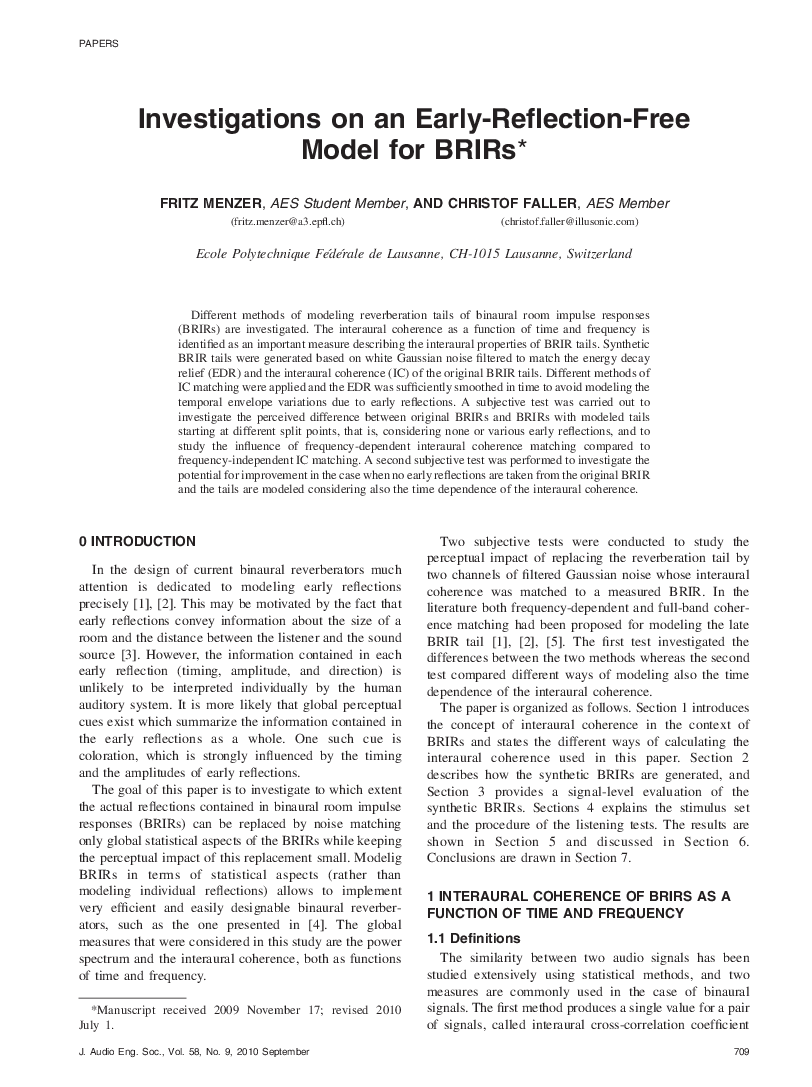Home / Publications / E-library page
You are currently logged in as an
Institutional Subscriber.
If you would like to logout,
please click on the button below.
Home / Publications / E-library page
Only AES members and Institutional Journal Subscribers can download
Simulating the late reverberation of a room using a synthetically generated reverberation tail is a common practice in the design of artificial reverberators. Binaural reverberators could benefit from better knowledge of the perceptual cues that are relevant for the reverberation tail. In this study the use of filtered white Gaussian noise instead of the original tail was subjectively evaluated. Matching the interaural coherence in each frequency band produced better results than full-band matching. In some cases time-dependent matching improved quality. Results are based on subjective studies.
Author (s): Menzer, Fritz; Faller, Christof
Affiliation:
Ecole Polytechnique Fédérale de Lausanne, Lausanne, Switzerland
(See document for exact affiliation information.)
Publication Date:
2010-09-06
Import into BibTeX
Permalink: https://aes2.org/publications/elibrary-page/?id=15517
(408KB)
Click to purchase paper as a non-member or login as an AES member. If your company or school subscribes to the E-Library then switch to the institutional version. If you are not an AES member Join the AES. If you need to check your member status, login to the Member Portal.

Menzer, Fritz; Faller, Christof; 2010; Investigations on an Early-Reflection-Free Model for BRIRs [PDF]; Ecole Polytechnique Fédérale de Lausanne, Lausanne, Switzerland; Paper ; Available from: https://aes2.org/publications/elibrary-page/?id=15517
Menzer, Fritz; Faller, Christof; Investigations on an Early-Reflection-Free Model for BRIRs [PDF]; Ecole Polytechnique Fédérale de Lausanne, Lausanne, Switzerland; Paper ; 2010 Available: https://aes2.org/publications/elibrary-page/?id=15517